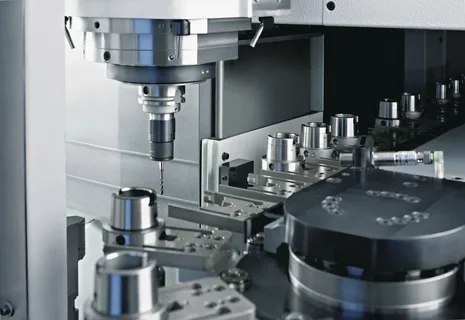Essential Tools for Every CNC Machinist’s Workshop

CNC (Computer Numerical Control) machining is an indispensable part of modern manufacturing. A CNC machinist is responsible for ensuring the precision and accuracy of machine operations, which require a specific set of tools for success. Whether you are new to CNC machining or have been in the trade for years, understanding the essential tools in a CNC machinist’s workshop can significantly enhance your work efficiency and quality.
The right tools help CNC machinists achieve accuracy, maintain the machines, and ensure safety. Let’s delve into the five essential tools every CNC machinist should have in their workshop.
CNC Machine
The most important tool in any CNC machinist's workshop is, of course, the CNC machine itself. These machines can be vertical, horizontal, or a combination of both and are designed to create parts by cutting, drilling, milling, or turning material based on pre-programmed software.
CNC machines offer high precision and versatility. They can operate continuously, making them ideal for both small batches and large-scale production. A CNC machinist relies heavily on this tool for shaping materials like metal, plastic, and wood into specific designs with exceptional precision. Depending on the complexity of the project, the CNC machine might include different attachments, like rotary tables or tool changers, which further increase its functionality.
Measuring Tools and Gauges
Precision is key in CNC machining, and that’s where measuring tools and gauges come into play. Tools like calipers, micrometers, height gauges, and dial indicators are vital for ensuring the exact dimensions of the workpiece. These tools help machinists measure the tolerance and fit of the final product to ensure it meets design specifications.
Using these tools before and after machining allows the CNC machinist to verify that the machine is working within the correct parameters and producing parts that are within the allowable tolerance range. Without precise measuring instruments, the risk of producing faulty components increases, which can lead to costly reworks and wasted materials.
Cutting Tools and Inserts
Cutting tools are used to remove material from the workpiece and include tools like end mills, drills, reamers, and lathes. The type of cutting tool chosen depends on the material being worked on and the specific requirements of the job. For example, carbide tools are often used for hard metals, while high-speed steel (HSS) tools are better suited for softer materials like aluminum.
Cutting inserts are replaceable parts that can be swapped out when they wear down. These inserts come in various shapes, sizes, and materials, providing flexibility for machinists to handle different types of cuts. Choosing the right cutting tool and insert is crucial in ensuring the accuracy of the part and minimizing machine downtime for tool changes.
Tool Holders and Chucks
Tool holders and chucks are used to securely attach cutting tools to the CNC machine. A tool holder ensures that the tool stays firmly in place during operation, reducing the risk of tool vibration and inaccuracies in the machining process. Chucks, on the other hand, are used for clamping workpieces into place on the CNC machine.
There are various types of tool holders, such as collet chucks, modular holders, and quick-change holders, each offering specific advantages based on the machine’s needs. The proper use of these accessories ensures a smooth machining process, improved tool life, and enhanced quality of the final product.
Coolants and Lubricants
Coolants and lubricants are essential for maintaining the longevity of CNC machines and tools. They help in reducing the heat generated during the cutting process, preventing tool wear and overheating. Coolants also serve as a cleaning agent, helping to remove debris and chips from the workpiece.
Different types of coolants and lubricants are available, depending on the material being machined and the specific requirements of the job. For instance, some coolant types are better for high-speed machining, while others are more suitable for slow, heavy-duty cutting. A CNC machinist needs to select the right coolant or lubricant for optimal performance and to extend the life of the machine and tools.
Conclusion
Equipped with the right tools, a CNC machinist can perform a wide range of tasks with precision and efficiency. The essential tools mentioned above form the backbone of any well-equipped CNC workshop. By investing in high-quality machines, measuring instruments, cutting tools, tool holders, and coolants, a CNC machinist ensures that each job is completed with the utmost accuracy and minimal downtime.
Staying updated on the latest advancements in CNC technology and tools is key to remaining competitive in the industry. Every CNC machinist should continuously enhance their toolkit and skill set to meet the evolving demands of modern manufacturing.
- Art
- Causes
- Crafts
- Dance
- Drinks
- Film
- Fitness
- Food
- Games
- Gardening
- Health
- Home
- Literature
- Music
- Networking
- Other
- Party
- Religion
- Shopping
- Sports
- Theater
- Wellness


